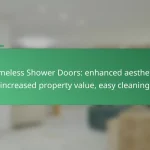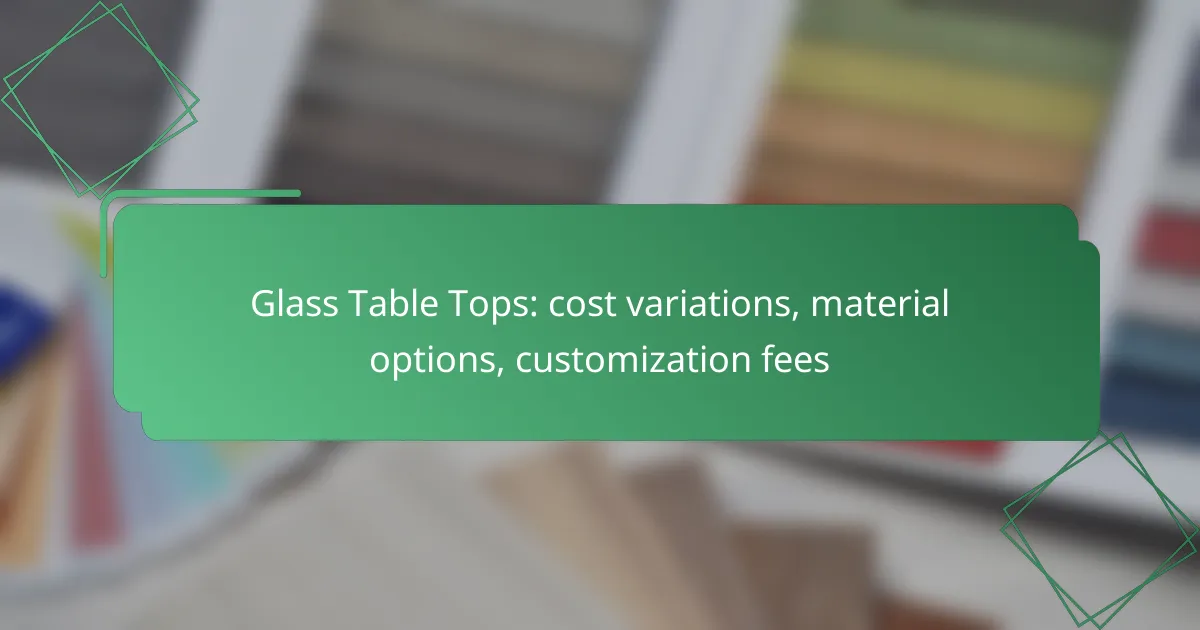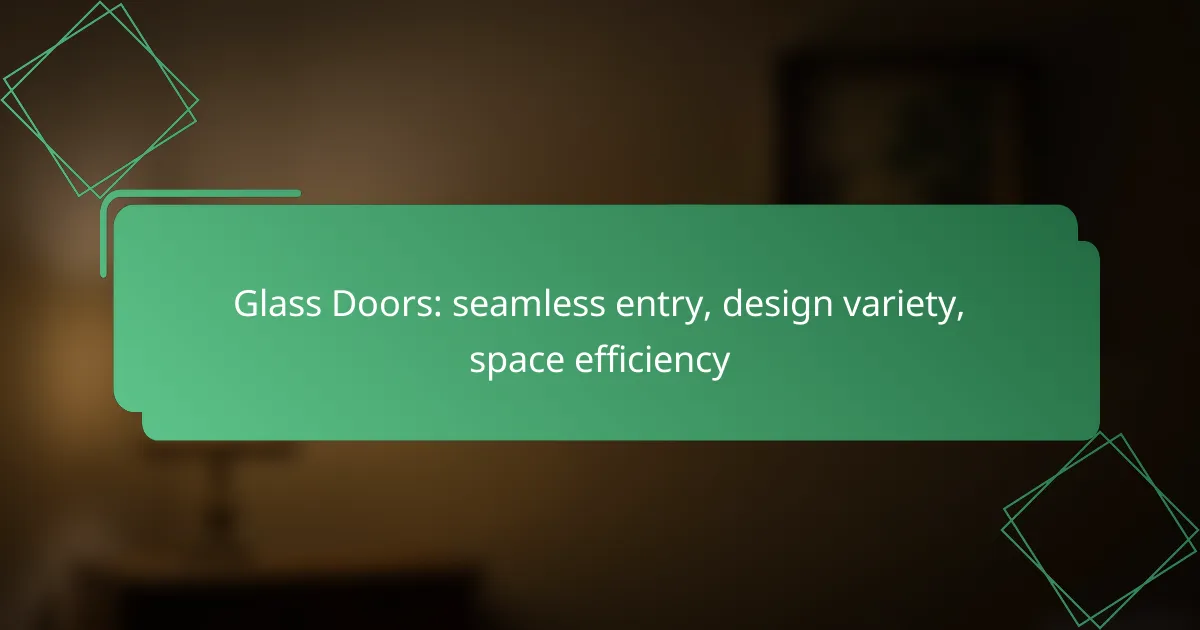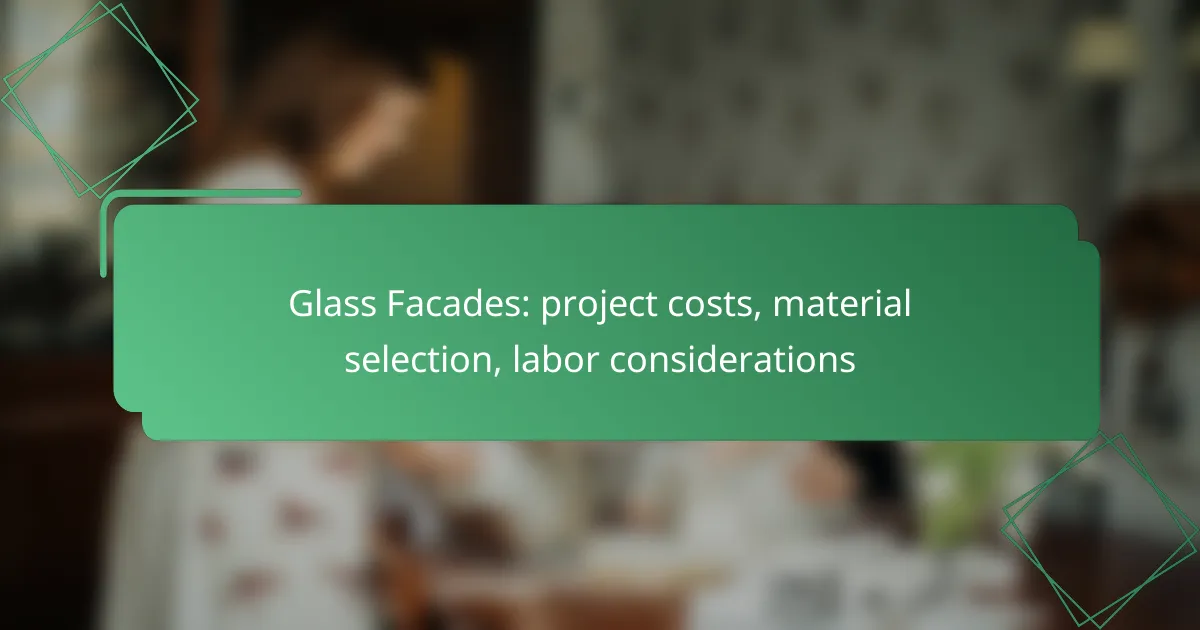Glass balustrades offer a modern aesthetic for both residential and commercial spaces, with pricing influenced by material quality, installation complexity, and regional factors. Proper installation is crucial for safety and compliance with local regulations, requiring meticulous planning and execution. Additionally, safety compliance costs can vary, making it essential to factor these into your overall budget to ensure adherence to standards.
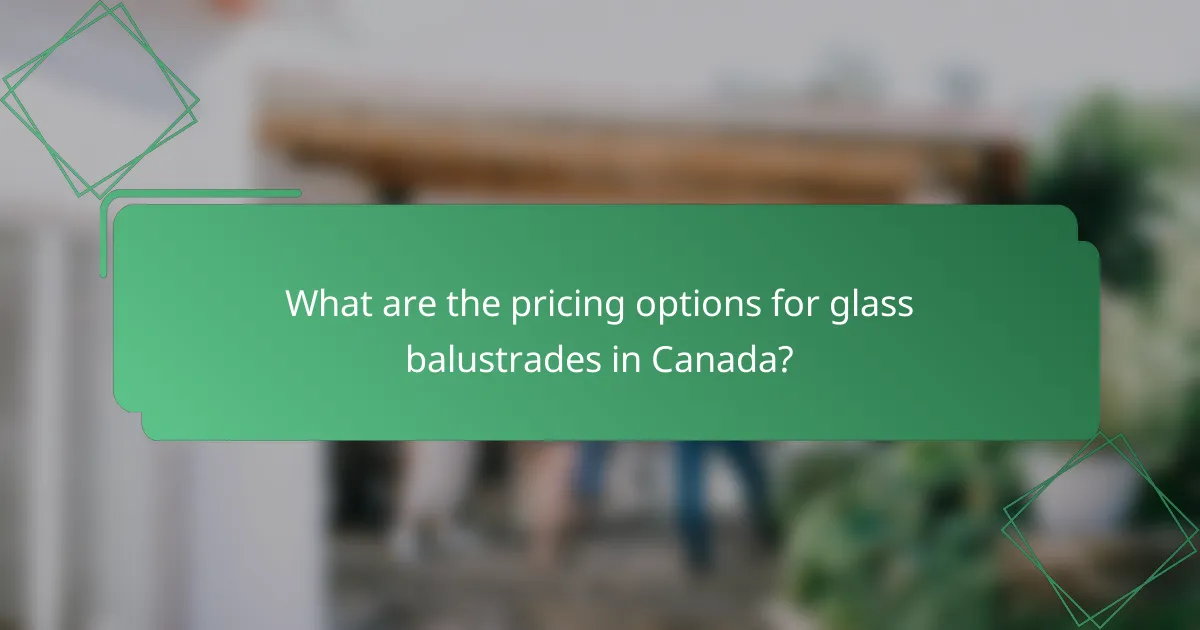
What are the pricing options for glass balustrades in Canada?
In Canada, the pricing options for glass balustrades vary based on factors such as material quality, installation complexity, and regional differences. Typically, homeowners can expect costs to range from moderate to high, depending on their specific requirements and preferences.
Cost per linear foot
The cost per linear foot for glass balustrades in Canada generally falls between CAD 100 to CAD 300. This price can fluctuate based on the thickness of the glass, the type of framing used, and whether the glass is tempered or laminated.
When budgeting, consider that higher-end options with custom designs or additional features may push costs toward the upper end of this range. Always request quotes from multiple suppliers to ensure competitive pricing.
Installation fees
Installation fees for glass balustrades typically range from CAD 50 to CAD 150 per linear foot. These costs depend on the complexity of the installation, including factors like site accessibility and the need for additional structural support.
Hiring a professional installer is crucial for ensuring safety and compliance with local building codes. Be sure to ask for a detailed breakdown of installation costs in your quotes.
Material quality impact
The quality of materials significantly impacts the overall cost of glass balustrades. Higher-quality glass, such as tempered or laminated varieties, not only enhances safety but also increases durability and aesthetic appeal.
Investing in premium materials can raise initial costs but may save money in the long run by reducing maintenance and replacement needs. Consider the long-term benefits when selecting materials.
Regional pricing variations
Pricing for glass balustrades can vary widely across different regions in Canada. Urban areas may see higher costs due to increased demand and labor expenses, while rural regions might offer more competitive pricing.
It’s advisable to research local suppliers and contractors to get a sense of the market rates in your area, as this can help you make informed decisions and budget effectively.
Average total project costs
The average total project costs for installing glass balustrades in Canada typically range from CAD 1,500 to CAD 5,000, depending on the size and complexity of the project. This estimate includes both materials and installation fees.
For larger projects or custom designs, costs may exceed this range. Always ensure that your budget accounts for potential additional expenses, such as permits or inspections, to avoid surprises during the project.
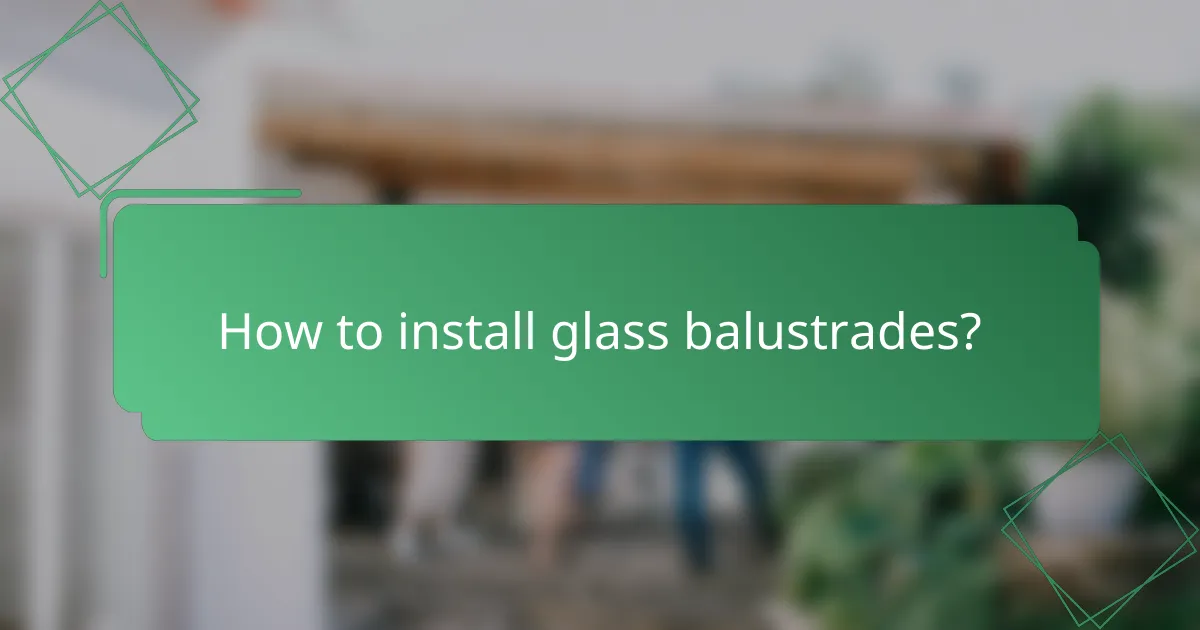
How to install glass balustrades?
Installing glass balustrades involves careful planning and execution to ensure safety and compliance with local regulations. The process typically includes measuring the installation area, selecting appropriate materials, and securing the glass panels properly.
Step-by-step installation guide
Begin by measuring the area where the balustrade will be installed to determine the required glass panel sizes. Next, prepare the base by ensuring it is level and clean. Install the supporting posts or channels, followed by the glass panels, ensuring they are securely fastened and aligned.
After positioning the glass, apply silicone sealant to prevent water ingress and enhance stability. Finally, conduct a thorough inspection to ensure everything is secure and meets safety standards.
Required tools and materials
Essential tools for installing glass balustrades include a measuring tape, level, drill, and screwdriver. You will also need safety gear such as gloves and goggles to protect yourself during installation.
Materials required typically consist of glass panels, metal or wooden posts, brackets, and silicone sealant. Ensure that the glass is tempered and meets local safety regulations to avoid hazards.
Professional installation vs DIY
Choosing between professional installation and DIY depends on your skill level and the complexity of the project. Professional installers bring expertise and can ensure compliance with safety regulations, which may save time and reduce risks.
On the other hand, DIY installation can be cost-effective if you have the necessary skills and tools. However, improper installation can lead to safety issues, so weigh the potential savings against the risks involved.

What are the safety compliance costs for glass balustrades?
Safety compliance costs for glass balustrades can vary significantly based on local regulations, installation specifics, and required inspections. Understanding these costs is essential for ensuring that your balustrade meets safety standards while also fitting within your budget.
Building code requirements in Canada
In Canada, building code requirements for glass balustrades are outlined in the National Building Code and may vary by province. These codes typically specify minimum height, load resistance, and material quality to ensure safety. Compliance with these regulations is crucial to avoid costly fines and ensure the safety of users.
For instance, most provinces require balustrades to be at least 1.07 meters high for residential applications. Additionally, glass panels must meet specific impact resistance standards, which can affect material choice and overall costs.
Inspection fees
Inspection fees for glass balustrades can range from a few hundred to over a thousand Canadian dollars, depending on the complexity of the installation and local municipality rates. Inspections are often required at various stages of the installation process to ensure compliance with safety standards.
It’s advisable to budget for multiple inspections, especially if your project involves custom designs or significant structural changes. Engaging with a qualified inspector early in the process can help you understand the specific requirements and associated costs.
Certification costs
Certification costs for glass balustrades can vary widely, typically ranging from several hundred to a few thousand dollars. This certification ensures that the materials used meet safety and performance standards set by regulatory bodies.
When selecting glass balustrades, consider whether the manufacturer provides certification documentation. This can save you time and money by ensuring that the materials are compliant with local regulations, potentially reducing the need for additional testing or rework.
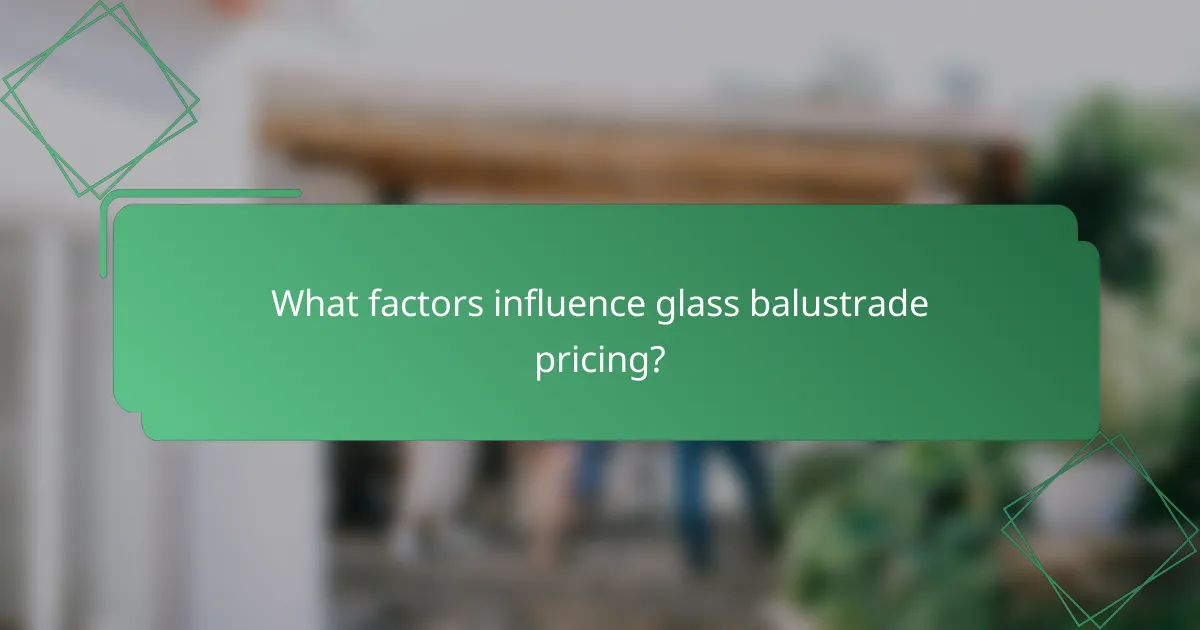
What factors influence glass balustrade pricing?
Glass balustrade pricing is influenced by several key factors including design complexity, glass thickness and type, and customization options. Understanding these elements can help you make informed decisions and manage your budget effectively.
Design complexity
The complexity of the design significantly affects the cost of glass balustrades. Simple, straight-line designs are generally more affordable, while intricate shapes or curves require more labor and materials, increasing the overall price. For example, a standard rectangular balustrade may cost less than a custom-designed one with multiple angles and features.
When planning your project, consider how the design will impact installation logistics. More complex designs may require specialized skills or additional support structures, which can further elevate costs. Always consult with a professional to get an accurate estimate based on your specific design needs.
Glass thickness and type
The thickness and type of glass used in balustrades play a crucial role in determining pricing. Standard tempered glass is often less expensive, while laminated or low-iron glass options, which offer enhanced clarity and safety, can be significantly pricier. Generally, glass thickness ranges from around 10 mm to 20 mm, with thicker glass providing better strength and durability.
In addition to cost, consider safety regulations in your area, as certain thicknesses may be required for compliance. Investing in higher-quality glass can enhance both safety and aesthetics, making it a worthwhile consideration for many homeowners.
Customization options
Customization options can greatly influence the price of glass balustrades. Features such as custom colors, finishes, and additional hardware can add to the overall cost. For instance, powder-coated frames or bespoke fittings can enhance the visual appeal but may also increase the budget.
When exploring customization, weigh the benefits against the additional costs. While unique designs can elevate the look of your space, it’s essential to ensure that the added expense aligns with your overall project goals. Always request quotes from multiple suppliers to compare customization options and find the best fit for your budget.
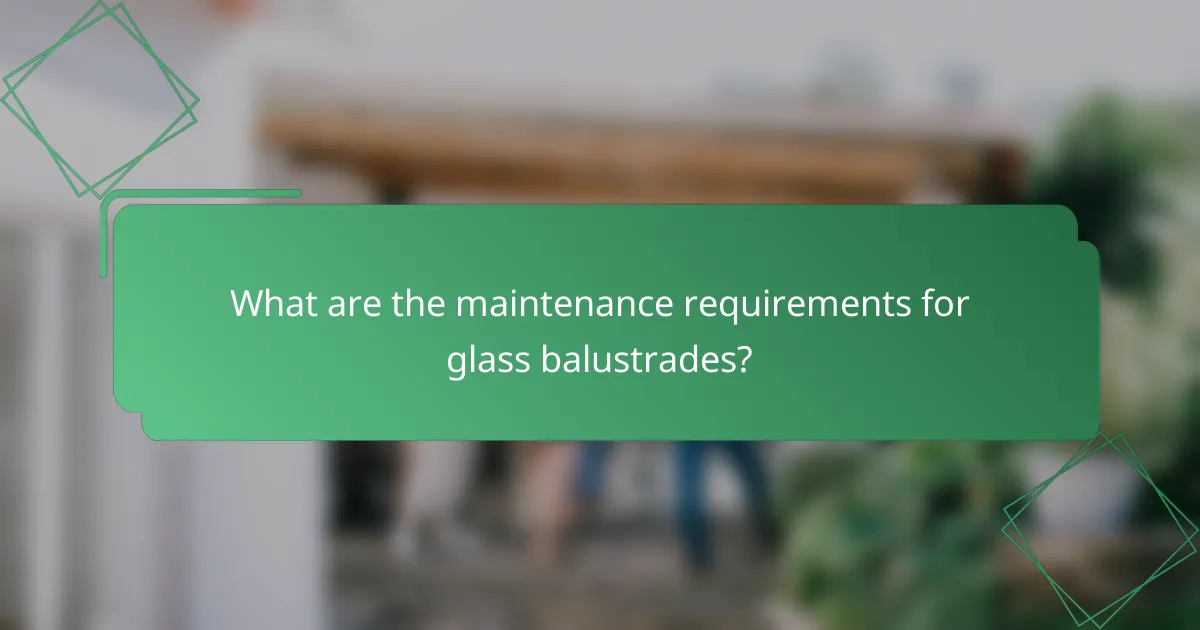
What are the maintenance requirements for glass balustrades?
Glass balustrades require regular maintenance to ensure their safety and aesthetic appeal. This includes cleaning, inspections, and addressing any damage promptly to comply with safety standards.
Cleaning and upkeep
To maintain glass balustrades, regular cleaning is essential. Use a soft cloth or sponge with a mild detergent to avoid scratches. For outdoor balustrades, consider cleaning them every few months, especially in areas with high dust or pollution levels.
Additionally, inspect the balustrades for any signs of wear or damage, such as cracks or loose fittings. Addressing these issues early can prevent more significant problems and ensure compliance with safety regulations.
Inspection frequency
Inspections should be conducted at least once a year, but more frequent checks are advisable in high-traffic areas or extreme weather conditions. Look for any structural issues, such as loose panels or corrosion in metal fittings.
Documenting these inspections can help track maintenance history and ensure compliance with local safety standards, which may vary by region.
Repairs and replacements
When damage occurs, repairs should be made promptly to maintain safety and aesthetics. Minor scratches can often be polished out, while significant cracks may require panel replacement. Always consult a professional for repairs to ensure they meet safety standards.
Budget for potential repairs, as costs can vary widely based on the extent of the damage and the type of glass used. Regular maintenance can help minimize these costs over time.




